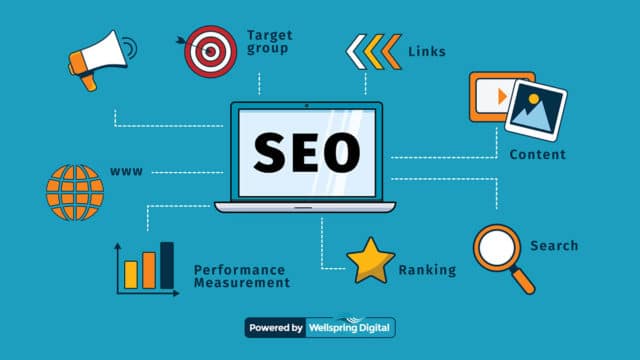In a recent episode of The Rankable Podcast, guest Crystal Carter of Wix made a statement that I think is so important… “SEO is never done!”
While this may seem obvious to some, others believe that SEO is a “project” with a beginning, middle, and end. Anecdotally, this seems especially true in the so-called “C-Suite.” This could be the CEO, CFO, CIO, and even, *gulp*, the CMO. Crazy, I know.
In this reality, these executives think that you optimize your website and you’re all set. Not even remotely close to the truth. If you’re faced with the task of convincing the “powers that be” that you need ongoing SEO, don’t worry. We have you covered.
The C-suite rarely cares about things like schema markup, link building, Google Core Web Vitals, and all the other ongoing SEO tactics that are necessary to capture and hold search rankings. They are more concerned with…
- The evolution of customer needs
- Securing and holding ranking positions
- Winning more qualified traffic than the competition, growth in market share
- Losing rankings (because of Google algorithm and technology changes)
“Can You SEO My Website?”
Many treat SEO like a project, and it can be even worse than that. They think, “Oh, you’ve SEO’d my site.”
Why is SEO never done? Why is SEO a continuing process? I think you can boil these things down to the following…
- New keywords emerge. As buyer trends and search trends change, and new products emerge, you may then have to figure out what new keywords are.
- Things break on the website. Technical SEO is important. You need to keep make sure you keep maintaining it.
- How users interact with a website can change. User intent changes.
- New technology like mobile and voice are driving change in search.
In the early days of digital marketing, everyone used a desktop to search and “surf the web.” Then it became a laptop as they became affordable. Then tablets. And then the advent of true smartphones, which has turned everybody into a drone, looking at the screens all day.
But seriously, user behavior and the technology associated with it will change, count on it.
User Needs and Changing Keyword Targets
It’s never just been about keywords. There are always more keywords to go after. Old products and associated product keyword terms become deprecated, which means that the old keyword rankings you had for those terms no longer apply.
“An example of this is the evolution of the BPM world. The term ‘Business Process Management (BPM)’ has given way largely to phrases like application development, automated workflows, and digital transformation.”
Karl Hindle, Wellspring Digital Founder and CEO
Keywords people throw around within an industry are then reflected in search activity. And these terms change out in the marketplace. You must keep an expert eye on these shifts or you will find yourself going after words and phrases that are no longer in use.
Securing Ranking Positions
Ranking positions will shift and change over time. But a strategic ongoing SEO campaign will guard against you losing ground to your competitors and possibly force them to buy keywords that you rank for organically. Here’s Karl again…
“The C-suite will understand the need to ‘build a moat’ and secure your position in search and consequently, in the marketplace. They want to increase that competitive advantage and continue to build up the barrier to entry for other competitors. They want to freeze them out.”
Karl Hindle, Wellspring Digital Founder and CEO
We’re talking about your search competition. If you stop doing SEO, whether it be link building, content marketing, or technical SEO, there’s a good chance your competitors won’t. When you stop SEO activities, your competition keeps going, and grabs your rankings and, consequently, your share of the market.
And it’s not just the competitors you have today. It’s the emerging competitors that may come in and disrupt you. So, you never can rest easy.
You want to make sure you continuously build out the moat. Therefore, we consider online monitoring of competition to be a fundamental part of ongoing SEO.
For example, we showed a client today how they have become the leader in their basket of competitors. If they stopped or even slowed activity, they will likely lose that advantage. Now is the time for them to strike, build the moat, and widen the gap between them and the competition.
Winning More Qualified Traffic than the Competition, Growth in Marketshare
Growth in market share is an ongoing SEO result that will resonate with the C-suite. There will always be more keywords to go after. But, we’re now moving from solely focusing on keywords to understanding user intent and how that translates into the keywords behind that intent.
If you want to grow, you’ve got to follow the trends in user activity.
- Search Activity – What are the users searching for?
- Search Intent – What is the intent that they’re displaying when they perform a search?
- User Demand – Are there other applications for your products and services that you, as the purveyor of them, have not yet figured out?
Steve Jobs used to say, “people don’t know what they want until you show it to them. That’s why I never rely on market research.” Can identify and tap into a new vein of user intent and search activity with the products and services you have?
Facebook Is for College Students, Right?
For example, consider Facebook. Sorry, Meta. It began as a tool for college students to connect with one another. It quickly evolved based on a relatively untapped market need.
Facebook is now one of the most popular social media sites for people over 65. According to a study by Sage Age, Facebook is the number one social media site used by seniors, followed by YouTube…
- Facebook: 46%
- YouTube: 38%
- Pinterest: 15%
- LinkedIn: 11%
- Instagram: 8%
- Twitter: 7%
- Snapchat and WhatsApp: 3% each
- Reddit: 1%
So, with that age group being such heavy users of Facebook, they’ve clearly pivoted and tapped into this new vein of opportunity. Did you even know that Facebook started as a social channel built solely for college students?
Now they’re investing heavily into the so-called metaverse. That was not even on their radar when they started.
We all now operate in a dynamic marketing landscape. It is always changing. There’s always more to go after. You will always have more growth opportunities if you’re looking for them.
Look at different applications for your existing products and services. New product and service developments all require continuous SEO efforts.
Things Change, Algorithms Change, People Change
Also, things break. Search engine algorithms change. There is constant change in how algorithms are looking at things like users themselves, user tastes, and their behavior. Optimizing for Google E-A-T alone can be a full-time SEO job.
And as we already discussed, how your audience wants to interact with you will change. How they’re looking at things will change. There’s only constant in SEO, and that is change.
Google is constantly updating its algorithms in an effort to improve its customer’s user experience and to fight any spam-related tactics. A few things to note here…
- Google Updates – An algorithm update will generally impact your site one way or another. It’s impossible to know for sure what that impact will be. That’s why it’s critical to have an experienced SEO monitoring these updates and making adjustments (or not touching anything) as needed.
- Black Hat or Spammy SEO – If you are currently instituting a spammy SEO campaign, your time will come. Black hat SEO is almost always sniffed out by Google. If you’re doing anything that is deemed against Google’s terms of service, it will negatively impact you at some point.
- No Ongoing SEO – If you’re doing no ongoing SEO, you will be negatively impacted at some point. You might look at your stats and think “oh traffic is good, no need to worry.” Well, give it time and you’re share of the Google SERPs will go to your competitors.
Lack of Activity Equals Lack of Market Share
I want to focus on that last point for a minute because I think this is where a lot of companies get SEO wrong. We’ve seen it happen too many times. No ongoing SEO is done for a website and then they have an “oh crap!” moment and come to us looking for help.
Lack of activity turns into a loss of market share. Loss of market share means the C-suite wants to know why traffic is down and there are no leads.
Then everyone is running around with their hair on fire considering whether or not to bid outrageous amounts on search terms when you could have ranked for them organically. Your marketing budget is at stake, as well as your job.
Build that moat and the C-suite will keep giving you the budget you need.
Do you need help convincing your boss that ongoing SEO is mission-critical? Drop us a line and we’ll have your back.

